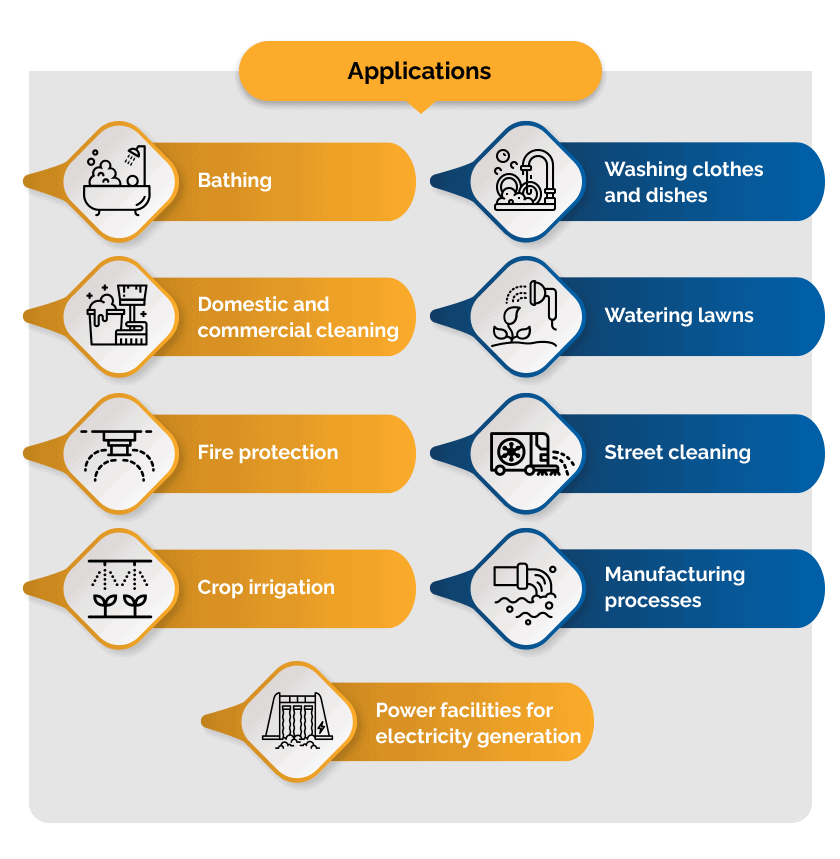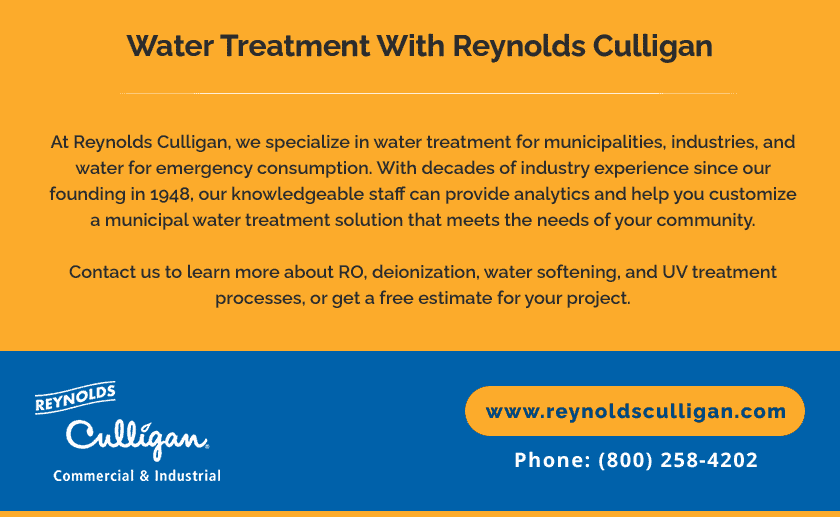Municipal Water Treatment & Drinking Water
Every community uses water differently, depending upon population, regional climate and geography, seasonal changes, and water costs. Still, the demand for consumption generally comes from four sectors: domestic, public, industrial, and commercial. Distribution of potable water applies to all four, with specialized applications including bathing and washing dishes at home or street cleaning and fire hydrants for public areas. Industrial and commercial applications necessitate water delivery for manufacturing facilities and local businesses.
Demand may change from season to season in various communities, but one thing remains the same: Water must be clean and safe for consumption. That’s why the municipal treatment of drinking water is an essential responsibility for any region.
What Is Municipal Water?
Municipal water is essentially tap water drawn from sources such as surface and groundwater for community use. The municipal water supply and storage network ensures that water is potable and otherwise clean through water treatment processes. Pipelines thendistribute treated water to consumers.
Municipalities must meet strict water safety standards as outlined by the Environmental Protection Agency (EPA). The minimum requirements create limits on over 90 different contaminants, including naturally occurring minerals and chemicals as well as bacteria and pathogens, fertilizers, pesticides, sewer overflow, and more. These standards also take water temperature, pH, and fluoride levels into account. Some communities meet the minimum standards, while others remove virtually all contaminants. This can account for the difference in the taste of water from one region to another.
Municipal Water Treatment Solutions
There are a variety of water treatment solutions and each is suitable for specific needs in domestic and industrial applications. The municipal water treatment process primarily protects the health of consumers. To that end, water should be tasteless, colorless, odorless, and free from potentially dangerous contaminants. For residential purposes in particular, it’s important that water contain limited amounts of minerals that could corrode piping and deposit hard water scale on fixtures.
There are several steps in the municipal water treatment process:
- Coagulation and flocculation. By adding positively charged chemicals to water, treatment systems can neutralize the negative charge of dirt particles and other contaminants suspended in the water. These positive chemicals and negative particles bind together into floc, or larger particles.
- Sedimentation. The floc is heavier, so this treatment step utilizes the force of gravity to settle those particles to the bottom of the water. This separates a portion of the water’s contaminants, or sludge, from the water as an initial clarification step.
- Filtration. Clear water can now flow through above the settled particles from the sedimentation process. This water passes through filters of different sizes and materials, like sand and charcoal, to remove additional chemical or pathogenic particles.
- Disinfection and sterilization. Treatment systems often add disinfectants like chlorine and chloramine to the water to kill any remaining pathogens as the water travels to its final destination. Another common disinfection option is UV radiation, which utilizes wavelengths of UV light to effectively remove microbes by disrupting the structure of their DNA.
Some other processes that water treatment systems can use in the above steps include:
- Deionization. Focused on the removal of charged mineral salt impurities, deionization utilizes tanks containing ion exchange resins. These resins join with the salts and separate them from the water molecules for reducing scaling and corrosion.
- Water softening. This process of water purification addresses hard water, using ion exchange technology to take minerals like magnesium and calcium out of water. Softening water prevents piping buildup.
- Reverse osmosis (RO). Pressurized feedwater flows through a semipermeable membrane. Dissolved contaminants catch in the filtering membrane, leaving purer water to continue through the process. Systems will sometimes use RO in conjunction with a sedimentation step.
Applications
As residential, commercial, and industrial sectors all use municipal water, it has an endless variety of uses. It must be clean enough for drinking and cooking, but there are many other applications:
- Bathing
- Washing clothes and dishes
- Domestic and commercial cleaning
- Watering lawns
- Fire protection
- Street cleaning
- Crop irrigation
- Manufacturing processes
- Power facilities for electricity generation
Water Treatment With Reynolds Culligan
At Reynolds Culligan, we specialize in water treatment for municipalities, industries, and water for emergency consumption. With decades of industry experience since our founding in 1948, our knowledgeable staff can provide analytics and help you customize a municipal water treatment solution that meets the needs of your community.
Contact us to learn more about RO, deionization, water softening, and UV treatment processes, or get a free estimate for your project.
Call or fill out our contact form for more information!





